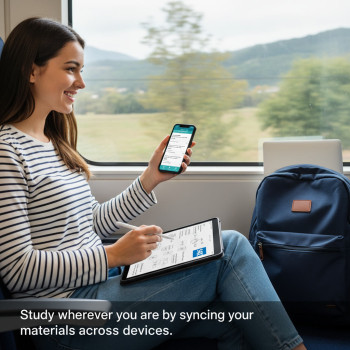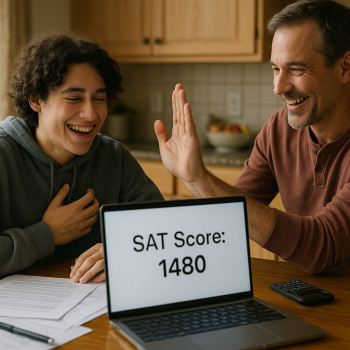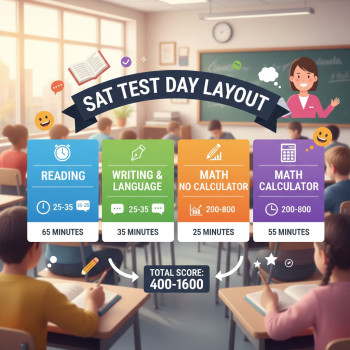Introduction: Why This Guide Matters
Heading into the college application season can feel like planning a small expedition — exciting, a little overwhelming, and full of unknowns. If you’re aiming for Stellenbosch University in South Africa and you’re using the Digital SAT as part of your application, this guide is made for you. I’ll walk you through what you need to know about SAT requirements, how scores are evaluated, practical timelines, documentation, and study strategies that actually work for busy students and concerned parents.

Who Needs the SAT for Stellenbosch University?
Stellenbosch University is a leading South African institution that attracts a global applicant pool. Domestic applicants typically follow South African qualification pathways (like the National Senior Certificate or IB), but international applicants — especially those from systems without direct equivalence — may submit internationally recognized tests such as the SAT.
Key categories who might need the SAT:
- International applicants whose school credentials don’t convert easily into South African admission scores.
- Applicants from US-style or American-curriculum schools.
- Students seeking additional evidence of academic preparedness beyond grades (test-optional policies are evolving; check with the university if unsure).
Understanding How the SAT Fits In
The SAT acts as a standardized snapshot: it provides admissions teams with a way to compare academic readiness across different educational systems. For a university like Stellenbosch, admissions officers will place the SAT alongside your school records, recommendation letters, personal statement, and any subject-specific requirements (for example, a portfolio for certain arts programs or additional prerequisites for engineering).
Important nuance: the SAT is rarely the only deciding factor. A strong SAT can enhance an application, but the university typically evaluates applicants holistically — looking at grades, subject choices, English proficiency, and the match between the applicant’s preparation and the chosen program.
What SAT Score Should You Aim For?
Stellenbosch does not publish a single universal SAT cutoff. Instead, reasonable target scores depend on the competitiveness of your chosen program. Broadly speaking:
- Competitive programs (e.g., Engineering, Commerce, Health Sciences): aim for SAT totals in the higher ranges to strengthen your profile.
- General programs and many arts or social science tracks: mid-to-high range SAT scores can still be very helpful, especially combined with strong school marks.
To make this practical, here’s a sample table showing suggested target ranges and what they communicate to an admissions reader. These are illustrative benchmarks meant to guide your planning:
| Program Competitiveness | Suggested SAT Total Range (Digital SAT equivalent) | What This Indicates |
|---|---|---|
| Highly competitive (Engineering, Commerce, Health Sciences) | 1300–1500+ | Strong academic readiness, quantitative and evidence-based reading/writing strength |
| Moderately competitive (Social Sciences, Psychology) | 1150–1290 | Good foundation; combined with strong school marks this is competitive |
| Less competitive / exploratory programs | 1000–1140 | Shows basic readiness; highlight other strengths (projects, statements, extracurriculars) |
How to Read These Ranges
These numbers are directional, not absolute rules. Admissions teams interpret scores in context — for example, a 1250 alongside top school marks and glowing recommendations can be more persuasive than a standalone 1400 without supporting documentation.
Documentation: What to Send With Your SAT Score
When applying from abroad, clarity and completeness matter. Typical documents include:
- Official SAT score report sent directly from the testing agency.
- Certified school transcripts with translations if not in English.
- Proof of English language proficiency if required (TOEFL/IELTS or equivalent), though some applicants may be exempt if their schooling was in English.
- Curriculum descriptions or subject syllabi if requested for subject equivalency evaluation.
Tip for families: request official score reporting well before application deadlines. Processing and international delivery can add time.
Timing Your Digital SAT: When to Test
Test dates and your application cycle should work together. Here’s a typical timeline to consider:
- Junior year (Grade 11): Start preparing and consider a diagnostic test.
- Early senior year (first semester): Take the Digital SAT once early — you’ll get a baseline and have time to retake if needed.
- Before application deadlines: Allow for at least one retake and time to send official scores.
Sample Timeline (Illustrative)
| Month | Action |
|---|---|
| June–August (before Senior year) | Intensive study block, take practice Digital SAT, decide on testing dates |
| September–November | Take Digital SAT; start college application forms and gather documents |
| December–February | Optional retake if score improvement is likely; confirm official score reporting |
| March–May | Finalize application materials; submit before university deadlines |
How Stellenbosch May Evaluate International SAT Scores
Although procedures vary by faculty, admissions officers generally:
- Compare SAT scores against other applicants and expected competency levels for the program.
- Use SAT results to evaluate readiness in math and evidence-based reading/writing.
- Combine scores with school grades, taking into account differences in curricula and grading scales.
Practical advice: if your SAT shows a relative weakness (for example, lower math), strengthen the rest of your application with strong subject grades, a targeted personal statement, and any relevant project or coursework that demonstrates competency.
Preparing Effectively: Study Strategies That Work
Preparation is less about raw hours and more about focused practice and feedback. Here’s a practical approach you can follow:
- Diagnostic first: take a full-length Digital SAT practice test under timed conditions to identify weak areas.
- Targeted practice blocks: focus on one skill (e.g., algebraic problem solving) per week rather than trying to cram everything at once.
- Active review: when you miss a question, write down exactly why and practice similar problems immediately.
- Timed sections practice: the Digital SAT’s pacing is an adjustment — simulate the adaptive environment and timing.
- Regular full-length tests: every 3–4 weeks to build stamina and track improvement.
Support matters. This is where personalized guidance can push you forward: one-on-one tutoring helps pinpoint the smallest, highest-leverage changes in your approach. Sparkl’s personalized tutoring, for example, provides tailored study plans, expert tutors, and AI-driven insights that can make practice more efficient — especially when time is limited.
Application Tips: Make the SAT Work for Your Story
The SAT is part of a larger narrative you present to Stellenbosch. Use it to reinforce the story you want the admissions committee to remember:
- Show upward trends: if your grades improved over time and your SAT score reflects that upward trajectory, highlight it.
- Contextualize: if you had limited access to certain coursework but still achieved strong SAT section results, explain your context briefly in your application.
- Use recommendations to back up academic claims: teachers who can speak to your problem-solving and independent learning add credibility.
Common Questions and Realistic Answers
Q: Is the SAT mandatory for all international applicants?
A: Not necessarily. Requirements depend on your country and prior qualifications. Many international applicants submit SAT scores to demonstrate equivalence if their secondary credentials don’t map neatly to South African qualifications.
Q: Should I retake the SAT if I’m just a few points shy of my target?
A: Often yes — but only if you have a plan to improve. A retake without focused practice rarely improves scores. If you can clearly identify improvement strategies and have time to implement them, a retake is worthwhile.
Q: How do I report my SAT to Stellenbosch?
A: Send official score reports from the testing organization and include the score report as part of your application. Confirm the specific reporting code or instructions on the university’s admissions page or application portal; follow the stated process carefully.
Academic Equivalency: Translating SAT into Local Context
Admissions officers often translate international exam results into an equivalency framework for comparison with local qualifications. While there isn’t a single universal conversion table, you can think of the SAT as a complement to your grades — it provides objective evidence of college preparedness. If you’re unsure where your score stands, use the suggested target ranges earlier in this guide as a starting point and aim to exceed program expectations where possible.
Financial Aid and Scholarships: Does the SAT Matter?
Scholarship policies vary. For some merit-based scholarships, strong standardized test performance can enhance your chances. If you’re targeting scholarship support at Stellenbosch, pair a solid SAT with a compelling application package: strong academics, demonstrated need or merit, and extracurricular impact. Make sure to complete any scholarship-specific forms and deadlines separately from your main application.
Practical Checklist Before You Apply
- Confirm whether your specific program at Stellenbosch requires or recommends the SAT for international applicants.
- Order official SAT score reports to be sent to the university in time for the deadline.
- Gather certified transcripts and translations where necessary.
- Prepare supporting documents (recommendations, personal statement, curriculum descriptions).
- Create a schedule that includes time for a potential SAT retake and score reporting delays.
How Sparkl Can Help (When It Fits Naturally)
Many students find one-on-one, tailored support to be the difference between an OK score and a score that opens doors. Personalized tutoring helps create a study plan that fits your strengths and busy schedule, targets the most common pitfalls for the Digital SAT, and provides expert feedback on practice tests. Sparkl’s approach — tailored study plans, expert tutors, and AI-driven insights — can be particularly useful for international applicants aiming to balance schoolwork with test prep and the complexities of applying overseas.
Real-World Example: A Sample Applicant Path
Meet Ayesha, a hypothetical applicant from a British-curriculum school aiming for Stellenbosch’s Commerce faculty. Her path:
- Grade 11 (June): Diagnosed with a practice Digital SAT; baseline total 1180.
- Summer: Focused algebra, data analysis, and reading strategies; took weekly timed practice sections.
- Early Grade 12 (October): First official Digital SAT — 1250.
- Identify gaps: weaker data interpretation and complex sentence errors.
- Two months of targeted tutoring, including real exam simulations.
- Final test (December): 1360. Sent official scores with application. Strong school grades and a thoughtful personal statement sealed the application.
Key takeaways from Ayesha’s story: diagnose, target, practice under test conditions, and build a narrative around your results.
Last-Minute Advice for Parents and Students
Keep your focus on steady, measurable progress rather than quick fixes. Prioritize sleep and mental health — a well-rested brain performs much better on test day than one trained by endless hours of last-minute cramming. Help your student build a consistent routine, celebrate small gains, and keep perspective: the SAT is important, but it’s one piece of what admissions committees evaluate.

Closing Thoughts: Be Strategic, Not Scared
Applying to an excellent university like Stellenbosch is an ambitious and achievable goal. Use the SAT strategically: aim for the ranges that make sense for your target program, prepare with focused practice and feedback, and present a complete, honest application that reflects your strengths. If you want dedicated support, consider tutoring options that offer personalized plans and real diagnostic feedback — targeted help can turn a few weeks of study into meaningful score improvements.
Finally, remember this: admissions are a match. Your goal is to show Stellenbosch why you belong in their community academically and personally. Thoughtful preparation, clear documentation, and a calm, steady approach will get you there.
Quick Resource Checklist
- Confirm whether the SAT is required or recommended for your program.
- Register for a Digital SAT date with enough time for a retake if needed.
- Send official scores and certified transcripts well ahead of deadlines.
- Use targeted practice, full-length simulations, and personalized feedback.
- Keep your application narrative cohesive — grades, tests, and essays should tell one story about your readiness and fit.
Final Encouragement
This process is a marathon with sprints — you’ll have bursts of intense work, followed by steady maintenance. Keep perspective, build a plan, and use resources that make study efficient. Whether you work with a tutor, follow a self-study schedule, or use a mix of supports, the important thing is that you keep moving forward with intention. Good luck — with the right preparation, Stellenbosch could be the next step on your academic journey.















No Comments
Leave a comment Cancel